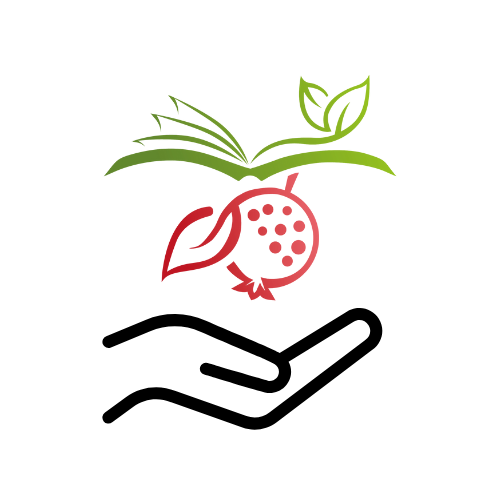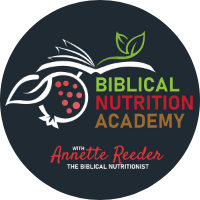
The aroma of fresh out of the oven fresh-baked bread is truly mouth watering. Can you smell it?
Nothing compares to the satisfying taste and health-promoting abilities of fresh whole wheat bread. And yes, bread is health-promoting!
In our health journey, we want to eat good foods that are good for us. Bread - living bread - is good. To help you make the best perfect bread, below are 12 tips to make great every time.
Bread is in the Bible almost from the very beginning. God gifted Adam and Eve with an abundance of life-giving, palate-pleasing foods, and wheat was on the list.
He created a multitude of seed-bearing plants:
And God said, “Let the earth sprout vegetation, plants yielding seed, and fruit trees bearing fruit in which is their seed, each according to its kind, on the earth.” And it was so. The earth brought forth vegetation, plants yielding seed according to their own kinds, and trees bearing fruit in which is their seed, each according to its kind. And God saw that it was good. Genesis 1:11-12
Then He gave the plants to Adam and Eve as a gift:
And God said, “Behold, I have given you every plant yielding seed that is on the face of all the earth, and every tree with seed in its fruit. You shall have them for food. Genesis 1:29
Seed-bearing includes wheat!
In Genesis 3:19, the Lord says specifically mentions bread:
“By the sweat of your face you shall eat bread, until you return to the ground, because from it you were taken; for you are dust, and to dust you shall return.”Since bread is a gift, we shouldn't shy away from making it a part of a healthy diet. Instead, we should aim to include fresh, whole, life-giving bread in our array of meal options.
The best way to do that is to make our own bread at home. Don't forget to download my Honey Whole Wheat Bread recipe!
How to Make Bread At Home

Wheat and all varieties of whole grains are gifts from the Lord!
Unfortunately, like many other modern day foods, it has been corrupted. Instead of fresh, live bread, most people in developed countries feast on dead, processed, bleached bread.
Wheat contains a load of nutrients, but because of the processing it goes through to become white flour or bread on the grocery store shelves, these nutrients are stripped and missing in the final product.
The “enriched” bread available in the store has been infused with replacement nutrients, but they’re neither as abundant nor as beneficial as God-given vitamins and minerals.
In addition to being stripped of 26 nutrients (with only 5 of them being replaced), white flour has also been robbed of its color, taste, and alluring aroma.
On the contrary, freshly milled whole grain flours contain a plethora of nutrients and natural oils still intact.
This is why I highly recommend that you making flour at home by mill your own grain! Here's a video where I talk about the different grain mills out there and what the best one is:
Or if you prefer reading, this list of the top grain mills (including my favorites) breaks down sizing, efficiency, prices, and more.
But to return to my point:
We can conclude that wheat, along with the various varieties, and bread are good for you!
Now, we don’t want to eat half a loaf with every meal. Any food in excess becomes a detriment to our health instead of a benefit.
However, when we invest in our health by switching from dead bread to live bread, our bodies - and taste buds - will thank us.
If you’re new to baking homemade bread, or just want some tips to perfect it, you’re in the right place. Here are my top 12 tips to make perfect bread every time.
(Don’t forget, though, the first secret successful baking and cooking is to double check the recipe and ingredients before you begin!)

How to Make Homemade Bread Perfectly Every Time
Are you ready to learn how to make bread?
Here are 12 tips on how to make the healthiest, yummiest bread for you and your family:
1. Use instant yeast.
You can use instant yeast or professional active dry yeast such as SAF. This may be added with dry ingredients and does not need to be dissolved in warm water.
2. Store yeast in an airtight container.

Also, don't forget to refrigerate or freeze to maintain freshness.The freshness and quality of yeast will impact how much your dough rises. Check expiration dates and keep your yeast in a cool place.
3. Measure oil and honey together.

When a recipe calls for oil and honey, pour the oil in a measuring cup first, then the honey. Make sure your measuring cup is big enough to fit them both. This allows honey to slide out more easily.
4. Pay attention to kneading time.

It’s always best to stop kneading early, rather than to over knead. Typical kneading time for whole wheat bread is 6-8 minutes, using the dough hook and speed 2 on the Bosch stand mixer. Start counting kneading time as soon as you have added the last of the flour.
5. Test the dough after kneading.
When dough is kneaded properly, you should be able to slowly stretch a small piece into a thin windowpane, thin enough to see light through. If it tears, it requires a bit more kneading.
Get Healthy & Closer To God In 21 Days!
Transform your mind, body and spirit through this life-changing
21-Day Daniel Fast Course
6. Test the rising of the dough.
How will you know if your bread dough has proofed enough and is ready to bake? It should double in size. (And most recipes include an estimated time for rising.)
But what if you’re not a great eye-baller?
To test if the dough has risen to double in size, press a finger lightly and quickly into the dough. If indentation springs back, let the dough rise a bit longer. If indentation remains or comes back slowly, the dough has risen enough.
7. Less is more (when mixing).
Don’t over mix batters for cakes, muffins, or cookies. It causes gluten development and can make baked goods tough. What you want is to mix your ingredients until they’re just combined thoroughly.
Remember that mixing your wet and dry ingredients separately helps reduce mixing time of your batter once it’s together.
8. Equipment matters.

Using a food thermometer is extremely helpful in determining when the bread is done. A loaf of whole wheat bread is done at 190°.
9. Take note of breaks.
If your bread loaf cracks on the sides, the dough hasn’t risen long enough or too much dough has been put in the pan. Take note of what goes right and what goes wrong in order to adjust next time.
10. Fruity bread tip!

When using cranberries or raisins in baking, soften them by placing them in a small bowl and covering with warm juice or water to plump. Soak for 10-15 minutes. Using water can cause the sweetness to be removed. Juice helps the berries to maintain their sweet flavor.
11. The perfect sweet bread.

When baking sweet breads, braided, or filled breads, check the loaf 5-10 minutes before the baking time is complete. If the top is browning early, tent the top with foil the last to avoid over browning during those last few crucial minutes of bake time.
12. The perfect slice.
For slicing cinnamon rolls or pizza rolls, use dental floss to cut dough. I was amazed how this sliced the perfect roll!
Make Bread at Home and Bless Your Family!
Homemade (and especially home-milled) bread is delicious and nutritious. Making bread at home is a gift for the whole family.
Remember those nutrients we mentioned before? They include:
- B-1
- B-2
- B-3
- B-6
- Folic acid
- Vitamin E
- Manganese
- Zinc
- Iron
- Calcium
- Magnesium
- Fiber
... And so many more!
The majority of these vitamins and minerals are stripped in the refining process, but whole wheat flour (and other grains as well) are chock full of healthy, beneficial, life-sustaining nutrients.
However, bread baking is part science, part art, and part trial and error. There may be times your bread doesn’t rise, over cooks, or misses in some other way.
Don’t give up!
Follow these tips for baking bread and you won’t be disappointed.
Familiarize yourself with your oven and cooking environment. Yeast doughs respond differently in a smaller, closed kitchen that holds warmth longer versus a larger, more open kitchen that may be cooler.
Practice.
Practice.
And practice more.
The more you bake bread at home, the more you’ll perfect it.
What’s your favorite homemade bread?
What are your favorite bread recipes?
I’d love to know and hear how making your own bread at home has blessed you and your family.






Hi I was just wondering if you ever use a sour dough starter instead of instant yeast?
i did order your recipe book